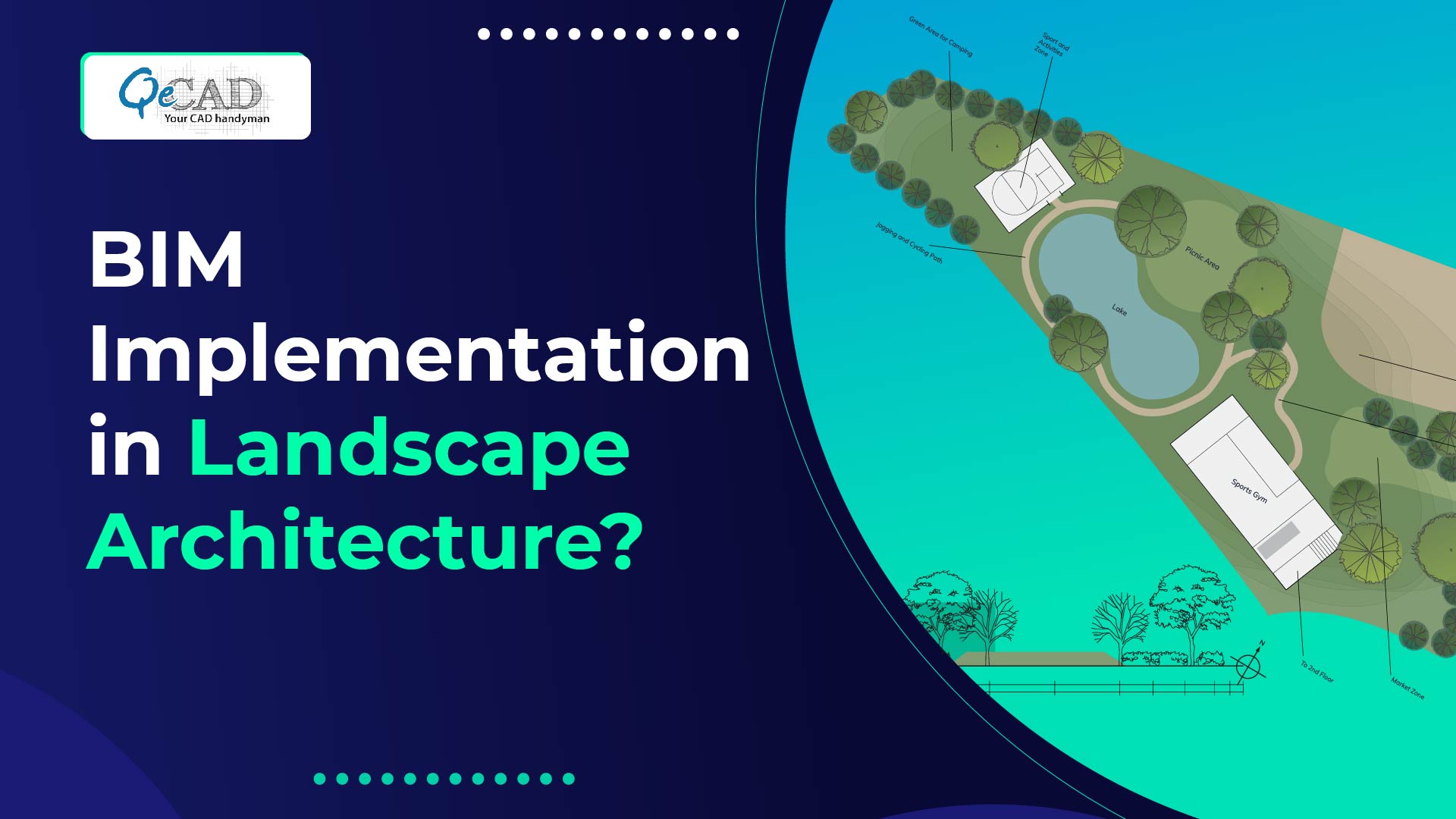
Landscape architecture is a very vast field dealing with exterior architecture. It includes planning, designing, and constructing the varied environment scenarios. It comprises creative, artistic, aesthetic appeal, and comfort as the key perspective. Landscape architecture is designed keeping every exterior element, living, non-living, or a situation in mind, such as climate, people, objects, animals, etc. It fulfills any project’s social and economic factors and considers human and environmental health and well-being as the foremost priority. The role of a landscape architect is to consider the above factors while designing exterior elements. Landscape architects must stay in sync with the architects and civil engineers to execute the project effectively. BIM can be of great help in bridging this gap in landscaping.
Why BIM for Landscape Architecture?
There are a few loopholes observed in traditional landscape architecting, as below, and to overcome the same, BIM can be considered helpful.
- Obscure design intent
- Lack of coordination and management
- Lack of information models
- Inaccurate energy analysis
- Clashes and Errors
- Lack of accuracy in costings
- Time frame concerns
- Lack of visualization
- Cluttered design and drafts
- Inefficient constructions with more reworks
BIM and Landscape Architecture
BIM Services is being successfully executed by AEC professionals in building design and construction. It helps them streamline their construction activities, saving huge in terms of cost, time, and wastage. It has now become the mainstream methodology for all architectural design and implementations. Landscape designers have just started to gain traction toward this upcoming trend in their domain. Although BIM is not intended to be used by landscape people, it will save time and money in the case of landscape modeling. It will help in mapping detailed information relevant to each exterior element, like pool design, its dimensions, its water inlet and outlets and level of water filling, and so on. Such comprehensive information would benefit everyone, including landscape architects, to accomplish their goals successfully in creating more practical and intelligent designs, and they can collaborate well with civil engineers and architects. Despite its various benefits, landscape architects are still resistant to implementing BIM due to the lack of its relevant tools for landscape designs. BIM software like Revit and ArchiCAD lacks landscape design tools, making it quite difficult for them to adapt BIM. But a few software like Vectorworks Landmark hold features that help with landscape designing and modeling.
Benefits of BIM in Landscape Architecture
Despite the challenges, BIM can be advantageous to landscape architects as below:
1) Enhanced Collaboration:
BIM will help landscape architects with the centralized model to stay in sync with architects, designers, and civil engineers for better designing and operations. It will ensure hassle-free communication among the team to smoothen the landscape workflow considering all aspects from different departments and being more transparent. BIM will communicate the design intent effectively in landscape architecture.
2) Data-Driven Models:
BIM will expand the wings of Landscape architects by creating information-rich and accurate models. The model will contain all the necessary data concerning each outer element, like its properties, operations, and maintenance. It will give the breakdown of landscape elevations and components, which would extensively use in material procurement and cost estimations. These models will also help make a crucial decision relevant to landscape construction and modeling.
3) 3D Renderings:
Incorporating BIM will help out in generating landscape renders. Adding elements and amenities, like lighting, colors, etc., to the renderings will give deeper insights into the project’s current environment and surroundings. This will depict a more realistic view of landscape architecture and help better understand and communicate.
4) Revit Family Creation:
BIM software like Revit consists of Revit families, which are the elements with the same properties used to design model elements. These are either in-built or created as per project demand. With access to Revit family, landscape designers can create elements or objects from the existing Revit library, save time and costs, and reduce reworks. Access to Revit families will enforce uniformity in the landscape model.
BIM in Landscape Architecture: Hit or Miss?
BIM, in spite of not being an intended tool for landscape architects, is becoming an excellent hit because of its ample benefits for landscape design, development, and fluent operations. It will help landscape architects serve any sort of project irrespective of size and complexity. It’s high time for them to avail of landscape drafting services and reap the benefits of saving time and money.
